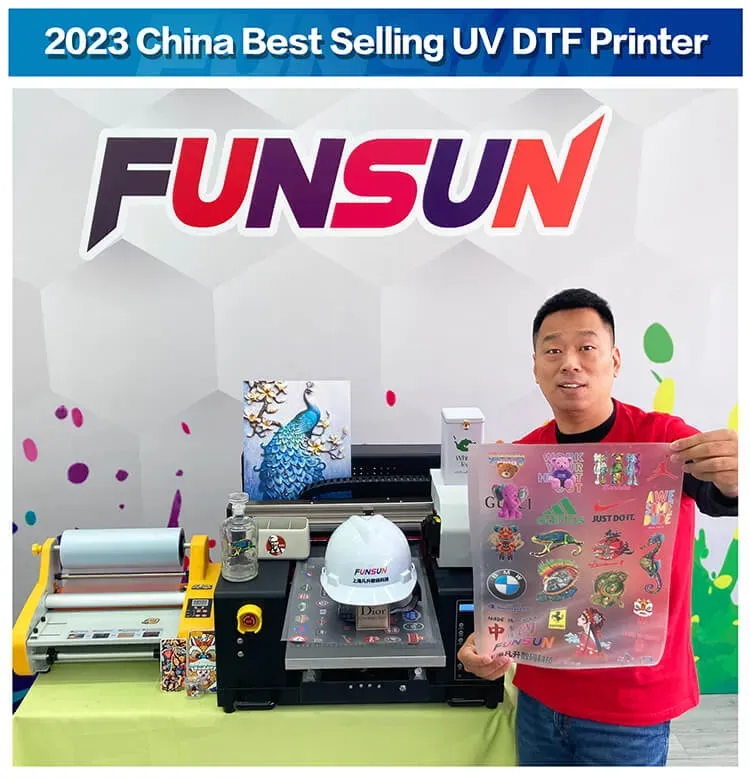In the dynamic world of custom printing, **UV DTF printing** has emerged as a revolutionary technology that combines the precision of UV printing technology with the flexibility of direct to film printing. This innovative process utilizes ultraviolet inks that cure instantly, allowing for vibrant and durable prints on a range of materials, from textiles to hard surfaces. As businesses strive to differentiate themselves with unique printed apparel and promotional items, understanding the ins and outs of the UV DTF process is more crucial than ever. With its ability to produce high-quality prints efficiently, UV DTF printing is transforming how brands approach customization, paving the way for endless creative possibilities. Dive into the details of this exciting printing method and discover how it can elevate your business to new heights.
Also referred to as direct-to-film UV printing, UV DTF printing represents a significant advancement in modern printing methodologies, merging the art of custom design with cutting-edge technology. This technique employs specialized UV inks that cure upon exposure to ultraviolet light, distinguishing it from traditional printing methods that often rely on water-based alternatives. With the growing demand for unique printed apparel and branded items, using UV DTF printing allows creators to efficiently bring their artistic visions to life while ensuring lasting quality. Additionally, this versatile printing method caters to a variety of materials, making it an excellent choice for diverse applications, from fashion to home décor. Understanding these nuances not only highlights the potential of UV DTF but also positions businesses advantageously in a competitive marketplace.
Understanding the UV DTF Process
The UV DTF process begins with the filming stage, where intricate designs are carefully printed onto a special film using UV inks. This crucial first step sets the tone for the quality of the final product, as the precision in this printing stage affects how the colors appear and how detailed the image is once transferred. The technology behind UV printing gives designers the ability to showcase vibrant colors and fine details, creating an eye-catching visual that appeals to potential customers.
Following the initial printing, the film undergoes curing when exposed to UV light. This step is integral as it solidifies the UV inks, ensuring that the printed design is not only striking but also highly durable. Curing creates a bond that makes the print highly resistant to scratches and environmental factors, which is paramount for applications in high-traffic areas or for items that will be washed frequently, such as printed apparel.
Frequently Asked Questions
What is the UV DTF printing process and how does it work?
The UV DTF printing process involves printing intricate designs onto a special film using UV inks, which cure instantly when exposed to ultraviolet light. This allows for high-quality, durable prints that can be transferred onto various surfaces, making it an innovative solution in custom printing.
What are the benefits of using UV printing technology in the DTF process?
UV printing technology in the DTF process offers benefits such as enhanced durability, versatility across materials (like textiles, plastic, and wood), and efficient production cycles. The UV-cured prints are resistant to scratches, fading, and moisture, making them ideal for various applications.
Can UV DTF printing be used for custom printed apparel?
Yes, UV DTF printing is perfect for custom printed apparel. It allows businesses to create vibrant, bespoke designs on garments like t-shirts, jackets, and more, while ensuring durability and longevity of the prints.
How does UV DTF printing compare to traditional direct to film printing?
Unlike traditional direct to film printing that often uses water-based inks, UV DTF printing employs UV inks that cure instantly. This results in more vibrant colors, better durability, and the ability to print on a wider variety of materials.
What materials can be used for printing with UV DTF technology?
UV DTF technology is versatile and can be applied to a wide range of materials including fabrics, glass, plastic, wood, and metal. This makes it an excellent choice for custom printing on diverse products, from promotional items to unique home decor.
What should beginners know before starting with UV DTF printing?
Beginners should understand the necessary equipment investment, the learning curve associated with UV technology, and the importance of establishing reliable supplier relationships for inks and films. Familiarity with the curing process and optimal settings is also crucial for achieving high-quality prints.
| Aspect | Description |
|---|---|
| What is UV DTF Printing? | A modern printing technique using ultraviolet inks and film transfer for durable, high-quality prints. |
| Process Explained | Includes filming, curing, and transferring the design onto various materials. |
| Advantages | Features durability, versatility across substrates, and efficiency in production. |
| Applications | Used in fashion, promotional items, and home decor, catering to varied industries. |
| Current Market Trends | Growing demand for customized products and sustainable printing methods. |
| Considerations for Beginners | Investment in equipment, learning curve challenges, and supplier relationships are key. |
Summary
UV DTF printing is a revolutionary technique in the printing industry, enabling the creation of vibrant and durable designs on various surfaces. This printing method stands out due to its unique process involving UV inks and specialized film transfer. As businesses increasingly seek high-quality and customizable solutions, understanding the fundamentals, such as its applications and market trends, becomes crucial for leveraging its benefits. Newcomers to this field should focus on equipment selection, mastering the technology, and building supplier relationships to ensure success in the dynamic world of UV DTF printing.



